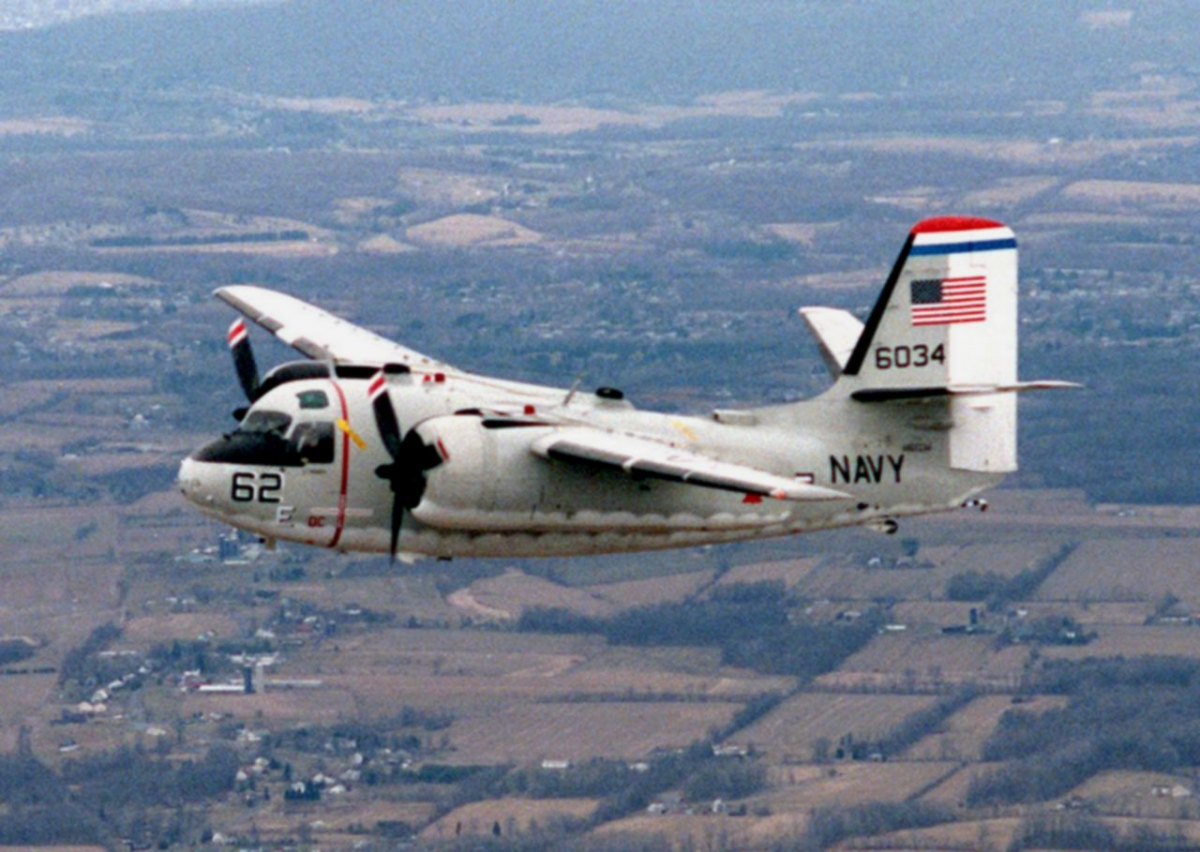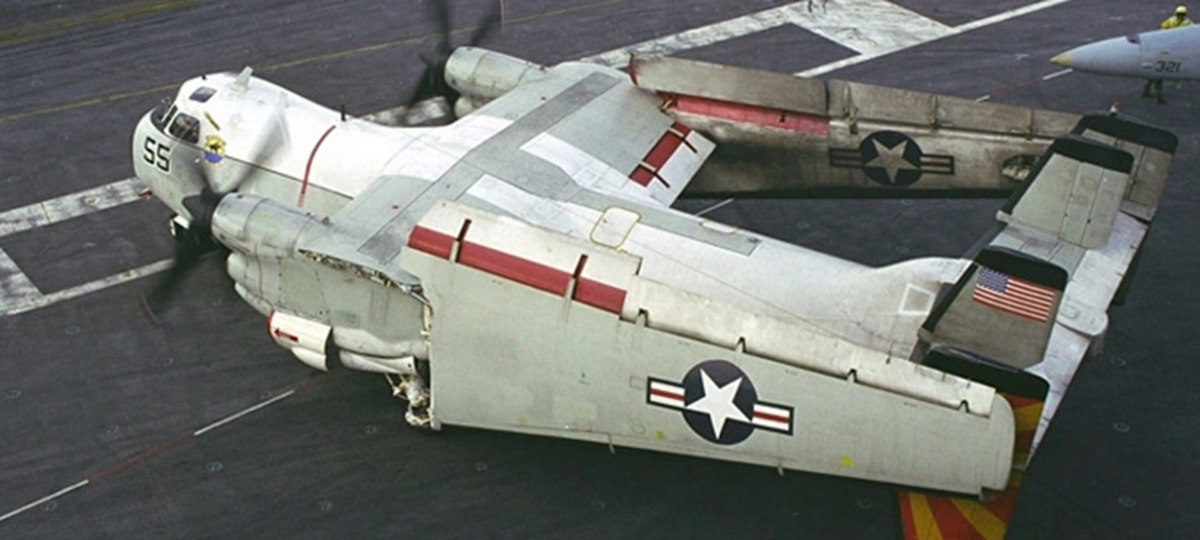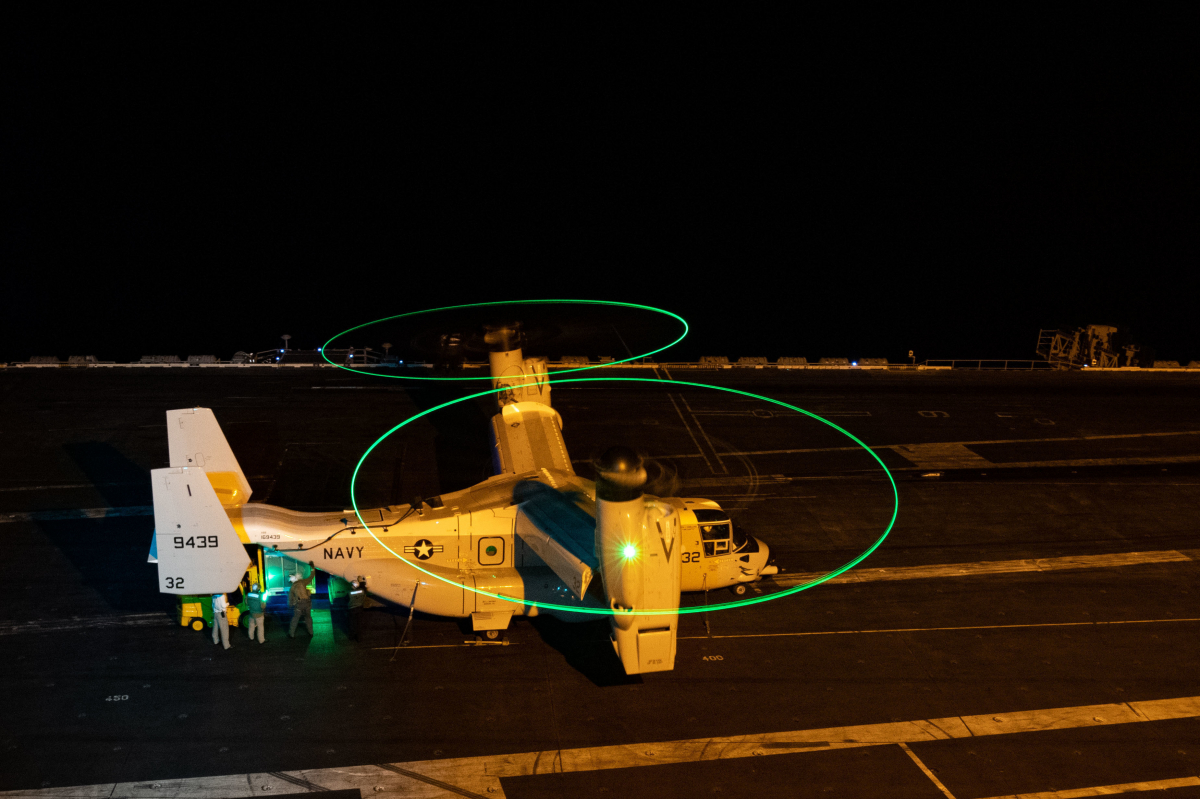Announced in 2017, the CMV-22B Osprey is in the process of replacing the U.S. Navy's first C-2A Greyhound aircraft. This replacement reached a major milestone on February 17, 2022 when the CMV-22B received its Initial Operating Capability.
The concept of Carrier Onboard Delivery (COD)
The concept appeared at the beginning of the Second World War, within the US Navy; its ships had to move away from the Allied logistic bases without having the possibility of refueling with men and materials. Seaplanes were thus used to link the flotillas to the various ports. Their large range allows them to cover a very large distance but they cannot land on the aircraft carrier, let alone dock with it (because of the wings, not at all designed for this purpose), forcing the ships to stop at the risk of being attacked.
At the end of the World War II, the US Navy then decided to modify TBF-Avenger torpedo bombers into cargo aircraft; the TBM-3R became the Navy's first COD. The turret was removed, the ammunition bay became a cargo bay and a door on the right side of the aircraft was added. The aircraft can thus carry 500 kg of material or 6 passengers in addition to the pilot. The transport of the pilots and personnel was indeed priority because the spare parts are (for the time) easily available. The hold is thus rather used for the transport of mail.


The late 1950s showed the weakness of the TBM-3R: it had become too old and its cargo bay was too small. Grumman then proposed a successor; the C-1 Trader. This new aircraft was much larger than the TBM-3R and was based on the S-2 Tracker submarine hunter, stripped of its sensors and cargo bay. The C-1 can carry 9 passengers or 3.8 tons of cargo. The first aircraft entered active service in 1955.
But the U.S. naval aviation is getting bigger and bigger, the size and complexity of the aircraft no longer resemble the aircraft used in Korea. The US Navy needs a cargo carrier and the C-1 is quickly becoming too small to carry the various aircraft parts. Grumman once again came up with a new COD, based on the E-2 Hawkeye radar lookout aircraft. However, Grumman would not simply remove the radar detection devices but develop an aircraft entirely thought out for its role as a COD.


The C-2 thus includes a cargo ramp in the rear (as opposed to a door on the right side of the C-1) to carry large parts and allow for quick loading/unloading, a fastening system is also thought of specifically to the hold to secure any cargo the C-2 might carry.
So they begin replacing the C-1 in 1966. These aircraft still fly today, although they are an upgraded version, the C-2A, introduced in the late 1980s. These aircraft are capable of carrying 26 passengers or 4.5 tons of equipment. Most flights, however, are made in a mixed passenger/cargo configuration.


A new operational COD in the US Navy
In the early 2010s, the Pentagon was already looking for the Navy's future COD. At the time, the US Navy was looking to standardize onboard aircraft; the COD would have to become a multifunctional aircraft and not just a liaison aircraft between the mainland and the aircraft carrier. It was at this time that Boeing and Bell Helicopter proposed a modified version of the Marine Corps Osprey. This version will be officially selected in 2015 as the replacement for the C-2A.
The new COD, named CMV-22B, is thus based on the MV-22B Osprey on which the kerosene carrying capacity has been increased and a high-frequency radio and a Public Address (PA) system have been added. The aircraft thus descends from a family of operationally tested and approved tiltrotors (apart from the 3 additions), allowing the U.S. Navy to reduce testing and development of training schemes for pilots, technicians, etc.
As of February 18, 2022, the CMV-22B has received confirmation of its initial operating capability(IOC) within the US Navy (the aircraft is self-sustaining in terms of maintenance and operational in all its missions within a squadron) after its first deployment.
The US Navy then has a multifunctional aircraft that is much more efficient than the C-2A:
- transporting 23 passengers or 5 tons of equipment over long distances
- unlike the C-2A, the CMV-22B is refuelable in flight
- logistical support to naval units near and far: it can dock or deliver slung cargo to ships within the wing or far from the wing. With the C-2A, cargo and men had to be transshipped in helicopters that do not have the same range or carrying capacity as the CMV-22B.
The U.S. Navy expects to receive 44 CMV-22Bs.


A COD in the French Navy?
The COD principle is only used within the U.S. Navy. The Charles de Gaulle and its embarked air group do not need a COD, since the French naval air group is generally not far from French or allied ports. This allows the wing tanker to make a few round trips according to the needs of the carrier battle group without the latter having to suffer a shortage of equipment.
There is only one exception, but it does not in any way imply a lack of logistical support, but rather a desire for very rapid action requiring greater logistics: it was Operation Harmattan in Libya in 2011. The aircraft carrier was fully integrated into the coalition forces, but the logistical chain was greatly extended by the desire to take action very quickly. The United States offered to lend two C-2As for two weeks to rotate between the Hyères naval air station (Provence-Alpes-Côte d'Azur) and the Charles de Gaulle aircraft carrier. This logistical support then allowed the French Navy to ramp up very quickly while relieving the wing's logistical chain.


Découvrez cet article sur Air&Cosmos

